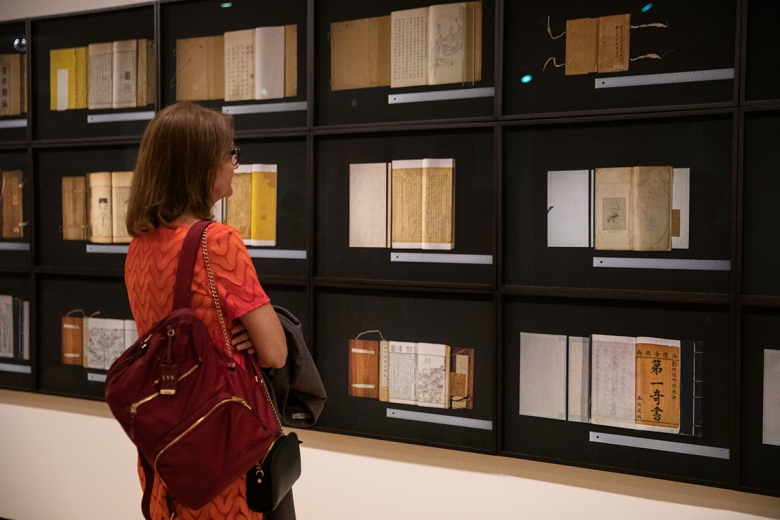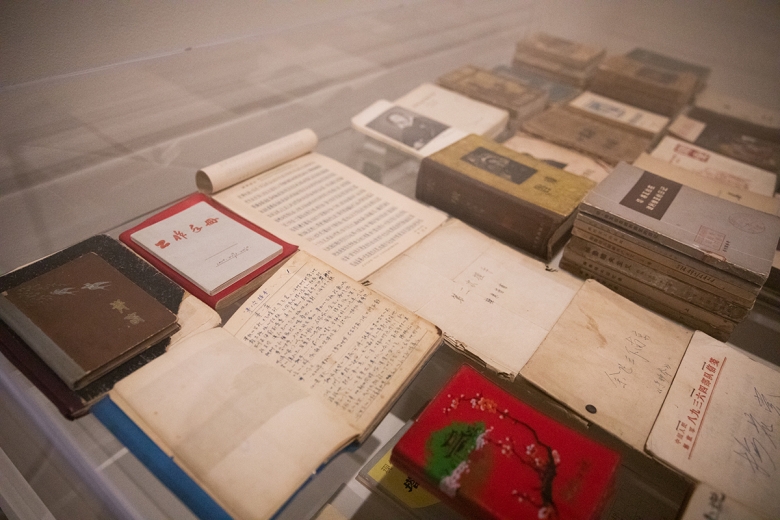A Very Brief History of Banned Books in China
Xiaoze Xie's research and documentation of forbidden works
Artist Xiaoze Xie's Objects of Evidence, currently on view at Asia Society Museum, focuses on the topic of literary censorship. In addition to his monumental painted canvases of books, manuscripts, newspapers, and libraries, this exhibition includes "objects of evidence" — banned books from different periods of Chinese history — for display and perusal. Xie has been locating and documenting these banned titles from archives, libraries, and booksellers in order to trace the subjective nature of censorship as it relates to shifting political ideologies, regimes, and priorities.

Literary censorship has a long and colorful history, and Xie begins with Scrutiny (Premodern Books), a photographic work documenting books which had been banned as early as the Tang dynasty (618-907). The titles include The Peony Pavilion, The Golden Lotus, and The Dream of the Red Chamber; now all considered masterpieces of the literary canon. The works were banned for various reasons, from containing objectionable content according to social, political, religious, or moral standards; sexual content, potential to foment revolution (an ongoing theme in the history of censorship in China), or the perceived ability to "bewitch readers."
Objects of Evidence (Modern Books), the ongoing effort that lends part of its name to the title of the exhibition, consists of collected antique books from three periods of censorship in modern Chinese history: the Republican Era (1911-49), the Hu Feng Anti-Party Clique period of the 1950s, and the Cultural Revolution (1966-76). Xie sources editions of these banned titles from both inside and outside Mainland China, and has collected over 750 titles to date.

During the Republican Period, the Nationalist government in power banned works by leftist political theorists, novelists, and essayists, publications advocating for Marxism and Soviet Russia, texts that supported the theoretical and social foundations of communism, and translated works and erotica. A notable victim of these bans was Lu Xun, the writer, essayist, poet, and literary critic now considered a founder of modern Chinese literature.
Following Mao Zedong's rise to power, in the 1950s writers such as Hu Feng and Lu Ling were among the few who dared to criticize Mao's political and utilitarian view of literature. For that, they became the objects of a national media assault that led to arrest, imprisonment, and the purging of their literary works from mainstream society. Hu, a product of the May Fourth Movement, protegée of Lu Xun, and devoted Leftist, was the victim of a time when censorship and the quashing of competing ideologies was central to political norms.

Books banned during the Cultural Revolution (1966-76) included classics of Western literature and books by Chinese authors that did not confirm to mainstream political ideologies, including the author and essayist Ba Jin. Considered one of China's most important writers today, during the revolutionary years his works were banned and he was heavily persecuted as a counter-revolutionary.
On September 28, 2019, Xie will discuss the research behind Objects of Evidence in depth during Forbidden Tales: Censorship and Society. Other guests include Martin Heijdra, director of the Princeton East Asia Library and James Tager, deputy director of free expression research at PEN America, in a panel facilitated by exhibition and Asia Society Senior Curator of Modern and Contemporary Art Michelle Yun.